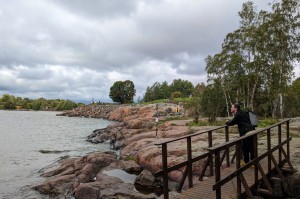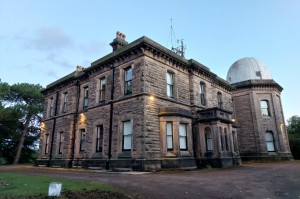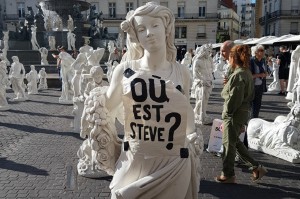Field Trip: CTM Festival 2019, Berlin
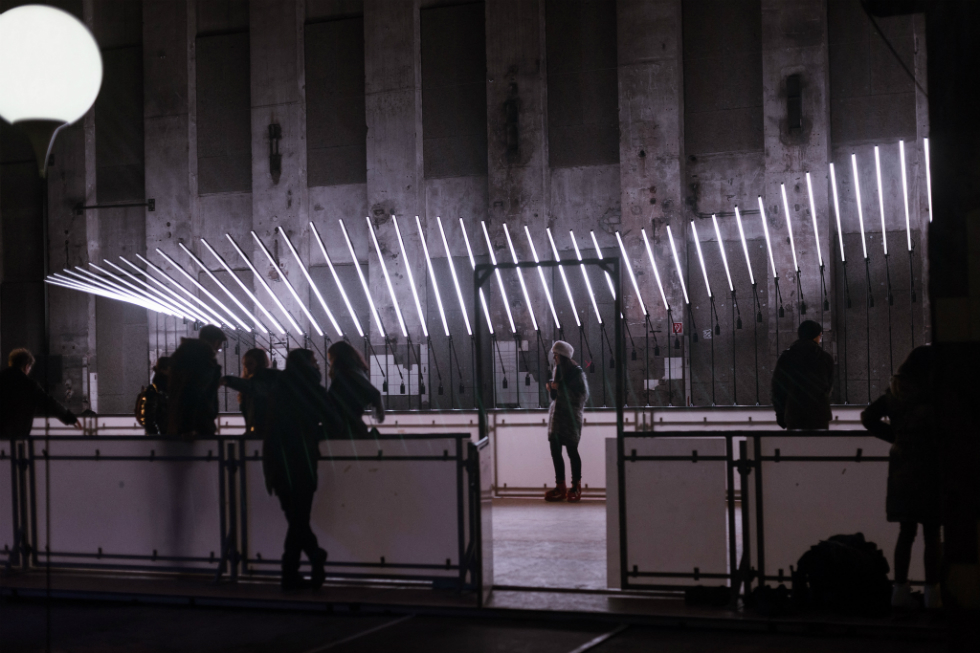
Ice skating rink stunts, underground culture and opportunism. At Berlin’s festival dedicated to electronic, digital and experimental music, Jacob Bolton finds cynical cool-hunting, but also fertile ground, rich with pushed boundaries…
On pretty much day one of CTM 2019, Resident Advisor ran this gem of a headline: “CTM Festival’s Berghain ice skating rink not actually ice”. The installation had promised the chance to skate to a lineup of DJs playing everything from ambient to jungle throughout the day in Berlin’s notoriously selective überclub, and had captured 14,000 Facebook-interested imaginations, according to the event page. In response, the organisers of the sprawling expo of experimental and underground art and music released this statement:
“Over the weekend, we’ve received a few messages from guests who expressed their disappointment regarding the skating experience at Halle am Berghain. We are aware that the synthetic ice surface being used doesn’t deliver a fully satisfying skating experience… We are also aware that there were not enough adult skate sizes to meet the current demand.
“… The project has received an enormous amount of feedback, both locally and internationally. What started as a tongue-in-cheek attempt to break up the seriousness often associated with the festival, quickly gained a whole other momentum on its own, largely outshining ten days of music by over 250 artists from over 30 countries.”
Integrity of the ice aside (it’s a festival of synthetically created art and music!), what the statement really betrays is a disconnect between what the organisers see as culturally valuable, and what the hordes of opportunistic cool young Instagram pilgrims understand as value in terms of social capital; between those legitimately seeking to carve out crucial liberating experiences (Berghain has its origins as a haven for queer exploration) and those who are in it to easily check off ‘been to Berghain’ from the hip bucket list, between the reason the underground exists in the first place and its ongoing dilution, being forced to the surface one Facebook check-in at a time.
There’s a kind of cultural war going on here that this disconnect illustrates, between those who create and enable access to music and politically fertile situations through which to rethink our identities and challenge the way we occupy space together, and those that are working to reduce it all down to surface cache, to cultural currency that can be exchanged on the social market. This matters because cultural wars today are really political wars, and the territory that the underground/experimental scene occupies has historically been an incubator for new solidarities and collective identities capable of clearing away the stale and discriminatory hegemonies and homogenies of culture at large. What CTM provided was a site upon which to look at this conflict playing out, a confluence of those experimenting to cut through stifling conventions and those feeding off that bleeding edge.
Case in point: at Croatian Amor’s Berghain gig he played his brand new album Isa in its entirety. It’s a good album: cold, inky, loaded with broken poetry from disembodied voices. It sounds like what corrupted files of ghosts found on an old hard drive might sound like. But the performance was, as a friend pointed out, just a fashion show: Croatian Amor with a laptop feeding the album into a synth and mixer, whilst two models wearing sunglasses and boxfresh hoodies bearing the name of the label (literally called Posh Isolation, €80) sat statue-still. It co-opted the dark, candlelit, cathedrally space of the club – a longtime haven for queer exploration – into a backdrop for an advert.
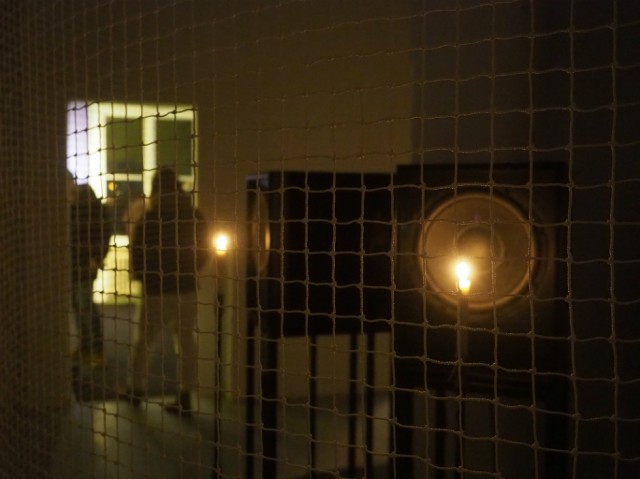
That same look popped up in the accompanying exhibition Persisting Realities at Kunstraum Kreuzberg too, in a sculpture called Oratorio by Vivian Caccuri. In the piece, a circle of solemn subwoofers faced candles that flicker when the speakers moved into gear. It’s a literalisation of the aesthetic experience of clubbing: subbass moving us, bodies trembling together. But that literalisation is the problem – it’s not art coming from the place that encourages people to build collectivising experiences, it’s just a heavy-handed representation of what one of those experiences looks like. It felt like Berghain had commissioned an expensive portrait of itself.
In another room, veteran turntablists Martin Tétreault and dieb13 presented Graphic Varispeed: documentation of a performance in which copies of a record are made from smearing wood glue over it and waiting for it to harden (a common technique to clean records), and then copies are made of these copies and played in quick series, like a Boiler Room set from Baudrillard. Sonically it was kind of dull though, it’s what you’d imagine wood glue records to sound like, all static and crackle. These were all played on conspicuously expensive turntables with hi-fi needles. Like Oratorio, it was more about the settings – or in this case the gear – that enables the underground, than about the ideas, issues and possibilities that bring it together.
Both pieces displayed another virus in the underground/experimental scene: a retreat into stale aesthetics, into the hardware of a culture’s past, when what we really need is artists opening up new ways of thinking about the wildly disruptive emerging software of the present. On that front, Helena Nikonole’s deus X mchn, tucked away towards the end of the exhibition, delivered. A language-based artificial intelligence trained on the Bible, Quran, Torah, Ramayana and other religious texts generates new scriptural verse, and every 15 minutes spits sheets of it out of a printer in the centre of the room. At the same time, it’s hacking unsecured printers around the world, printing sheets of verse into unwitting offices. Next to the printer, a screen shows hacked footage of CCTV systems connected to unsecure networks being taken over by the AI, with a synthesised human voice invading their speaker systems and delivering AI-generated sermons to train stations, industrial parks, supermarkets, baffling security guards and cashiers worldwide.
It seems kind of brutal on the surface, and there are definitely obvious problems with scaring unwitting workers for the sake of an art project that they will probably not see. But by demonstrating the ease with which our omnipresent surveillance apparatus can be so easily co-opted, it activates an awareness of our over-weaning surveillance culture and encourages precautions that are ultimately in the interests of individuals. It’s not just a piece about a breach of privacy through autonomous means, but an enactment of it, and this is where it draws its power.
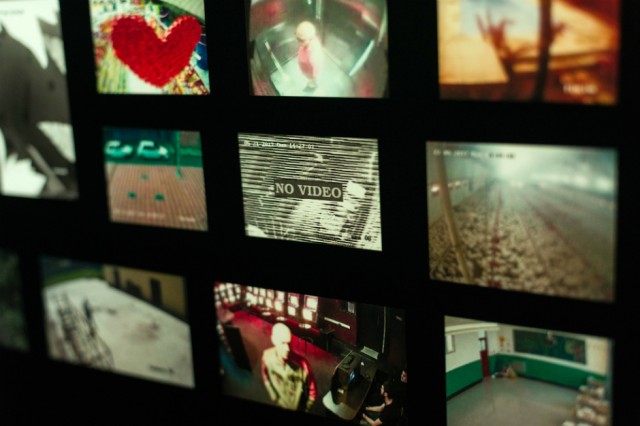
The gear fetishism of Oratorio and Graphic Varispeed popped up again in the Raster.Labor exhibition at nGBk. Five artists from the experimental Raster label built sound sculptures from everyday objects (clocks, or cassette players, or furniture), wired up to expensive eurorack synth systems, each laid out sprawling on sterile white backlit tables like cadavers. Conceptually it was sort of interesting – enclosed systems of generative sound production based on hybrid technologies, churning out soundscapes. Yet although they were laid out naked on clinical tables to be read, without a decent knowledge of modular synthesis and sound manipulation, the systems remained illegible, and virtually no attempts were made to enable that access to the uninitiated. It felt like those moments in pre-war novels when characters that have been speaking in English the whole time suddenly break out into French at great length. It’s endemic of an irritating issue in the experimental scene: the propagation of a dedicated, rarefied audience through rewarding the initiated and excluding everyone else.
A much more accessible use of acoustic and electronic technologies took place at the Yair Elazar Glotman and Mats Erlandsson concert at MONOM, Berlin’s Center for Spatial Sound. The two electronic composers were joined by a chamber orchestra, arranged in a circle in the middle of a dark, heavily fogged room. Everyone in attendance sat on the floor or stood around them, all at the same level, all attention in the room focused the same way, reducing the performer/audience divide. The entire concert took place on a raised mesh floor, under which bass speakers nestled, and around and overhead were 16 tall columns forming a 3×3 square grid. Each column had 4 speakers, and the sound engineer played the mixer like a pianist, swirling the sounds of each player around the room, a technology that lifted the performance’s drone-like composition, allowing the texture of the sound to come to the forefront. Unlike a concert hall, in which the music is something that comes at you from a static point, the listening environment created here allowed you to occupy the music, to be inside it together rather than just facing it.
The most adventurous (and most divisive) experiment in new music technologies of the festival was the Actress and Young Paint concert at HKW, in partnership with Transmediale. Actress, the producer who’s made his name through deconstructing and reimagining UK club genres like 2-step and garage, performed an improvised live set with Young Paint, an artificial intelligence trained to emulate Actress’s sound through being fed his music and extrapolating his intuitive sense of texture, melody and rhythm. Actress shuffled onto stage on to a small studio setup, and began playing sparse drum loops, skeletal basslines, long drone notes. Responding to these, the AI would perk up and add something to the composition, pushing it in a new direction. This direction was, most of the time, massively jarring; it wasn’t so much deconstructed club music as club music smashed to bits and stuck back together, like crazy paving. The majority of the performance was stuttered, unsure, kind of lopsided. It would be an omission to not mention that a lot of people got up and left.
But the performance was punctuated by moments where things clicked, where human and AI synchronised and discovered a new sound, or where Young Paint would throw out a curveball musical intervention so leftfield that it took a while to get used to, but once you were into it you knew you were witnessing something legitimately new, unimagined, literally unheard of. Right at the end, just after Actress had left the stage, a synthesised human voice started timidly singing, unsure and broken, like a kid uncertain of who they are singing to. As a concert, it was fragmented and messy. But as an experiment in figuring out our working relationship with artificial intelligence, it was solid: an honest enactment of a fragmented, messy, uncanny relationship, of two entities trying hard to figure each other out. This is, after all, the experimental. It should feel jarring, it should demand effort to recognise ourselves in it. That’s the process through which we disidentify ourselves in order to identify again, on newer terms, and on the verge of an AI-enabled total societal overhaul, it’s something we’re going to have to learn to do a lot more.
Jacob Bolton
Jacob visited CTM Festival, Berlin, earlier this year, “a prominent international festival dedicated to contemporary electronic, digital and experimental music”.
Images, from top: CTM Festival Eishalle © Camille Blake; Oratorio @ Kunstraum Kreuzberg/Bethanien © Udo Siegfried; Helena Nikonole deus X mchn @ Kunsthaus Bethanien © Camille Blake; Home page banner image: Actress & Young Paint at HKW part of CTM and Transmediale © Adam Berry



